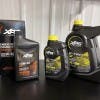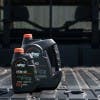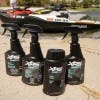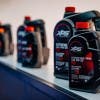It’s arrived; a whole new season of off-road excitement. Whether you’re out to discover new trails or just get the job done right, the first thing you’ll need to do before heading out is to perform that necessary yearly ritual: the best-practices inspection & maintenance routine.
It’s neither time-consuming nor complex, but over the course of a season it can end up saving you an awful lot of worry & expense. The ride depends on it, your off-road vehicle is counting on it, and ultimately, you’re the one who’s going to get the most out of it.
Tires & Brakes
Let’s start from the ground up – which means the tires. Your off-road tires certainly need a comprehensive check but giving them the once-over before each ride is highly recommended. So, be sure that the pressure falls within acceptable parameters, and there is no excessive wear or abnormal wear patterns that might indicate other problems.
The importance of an optimally functional brake system should rank at the top of your list. It’s the one component that’s got to work right every time. While a daily check isn’t necessary, a thorough inspection is every season. Be sure to check fluid levels, the condition of pads, discs, calipers and brake fluid lines. Make sure all components are free of debris and show no signs of abnormal wear. This is one area where consulting a qualified service technician may be your best bet if you notice a need for repairs.
Filters, Fluids & Lubricants
An XPS Oil Change Kit makes quick work of a yearly oil & oil filter change and is about as quick a maintenance procedure as can be. Without sufficient clean oil even the best engine won’t escape costly damage.
Gearbox oil should be changed every two years, more often if you’re a big fan of mud, dust, or regularly carry heavy loads. You should flush and replace the engine coolant every five years, but there’s no harm in checking the levels whenever you feel it might be necessary.
Your air filter is crucial, and it should be inspected and replaced yearly or as needed. Neglecting its maintenance can impact your fuel economy and affect engine performance, neither of which are welcome on a challenging day of work or riding the trails.
Drivetrain & Drive Belt
Even the most powerful, well-tuned engine is wasted without a properly maintained drive system. Begin by inspecting & adjusting the CVT drive belt, taking care to thoroughly clean the driven pulley. It’s worth noting that debris lodged in and around the CVT intake can cause the CVT system to overheat.
From there move on to the drivetrain, source of all that fabulous torque that comes in so handy right when you need it! Inspect and clean the CV joints and rubber boots, being sure to check for abnormal play in the joints and tell-tale cuts in the boots that might be cause for concern. Ensure that no debris is lodged in the area that if left unattended might lead to cracks in the CV boot and trouble further down the trail.
Power Storage & Delivery
In this case we mean battery & spark plugs.
Spark plugs aren’t nearly as difficult to clean or replace as some might think. A basic home ratchet kit usually comes equipped with everything you’ll need but check to be sure yours includes a 3/8” ratchet wrench with a 16 mm-deep socket, as well as 3” and 6” extensions. Be sure to have a new set of plugs handy before you begin, and that you’ve got the right ones for your vehicle model.
After a few months of sitting idle your vehicle’s battery is going to need some attention. Chances are it’ll still be in tip-top shape, but you can make sure by checking over the condition of the terminals & contacts and look for telltale signs of corrosion that might occur in certain under or overcharging situations. And if you’ve got a multimeter handy it’s always a good idea to measure power output levels just to be on the safe side. A lot can happen to the best of batteries after a few months off the trail.
Good to Go
That’s it. You’ve completed your off-road best practice vehicle inspection & maintenance routine. It takes so little time to ensure the proper functioning of a machine that means so much to you, and with a little care will provide many years of enjoyment.









